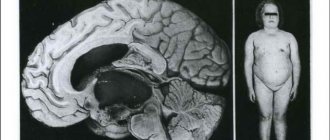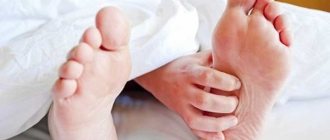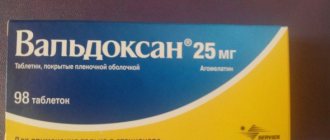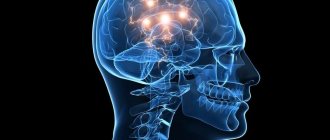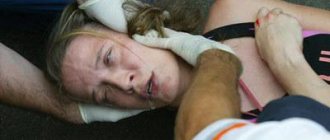Neurocirculatory dystonia of mixed type is one of the most common disorders, which mainly affects young people. This is a whole complex of disorders in the functioning of the cardiovascular system, which is accompanied by a pronounced clinical picture and requires mandatory treatment.
Fortunately, dystonia is not as dangerous as various cardiac pathologies, but it does have a negative impact on the patient’s quality of life. To cope with the ailments characteristic of NCD, it is important to determine the causes of its development. After all, if efforts are aimed at eliminating not only the symptoms, but also the causes that led to their appearance, maximum results can be achieved from therapy.
General information
In the medical environment, other names for the pathology are occasionally found: “neurocirculatory asthenia”, CSD, “cardiac neurosis”, NSD or “excitable heart”. There are two types of functional changes in the vascular system: neurocirculatory and vegetative-vascular dystonia.
These concepts should not be combined, since NCD is an independent nosological unit that has its own etiology, pathogenetic mechanism, clinical manifestations and prognosis. At the same time, the distinctive features of NCD are the predominant prevalence of cardiovascular symptoms, the absence of any connections with organic ailments, and the initially functional basis of changes in autonomic regulation.
NCD in medicine is often encountered by cardiologists (especially in neurocircular dystonia of the hypertensive type), neurologists and general practitioners. Moreover, the frequency of detection of NCD in patients with therapeutic and cardiological specialties is 30−50%.
The disease can develop in patients of all ages, however, it is more often observed in young women. Rarely, this pathology can be found in children under 15 and adults over 45 years of age.
Causes of the disease
The nervous autonomic system covers the entire human body, being responsible for the adequate functioning of all systems, maintaining the stability of the internal environment and ensuring the body’s adaptation to external factors.
The functioning of the body is ensured due to the balanced influence of the parasympathetic and sympathetic autonomic departments. If one of the departments predominates, pathological changes occur in the functions of the organs. Adaptive abilities naturally also decrease.
There is also a reverse mechanism: disruptions in the functional state of the endocrine organs can disrupt the balance between the parts of the ANS.
Due to the fact that pathologies are the result of an imbalance in the autonomic system, the form of the disease corresponds to the department that predominates .
Etiological and provoking factors
There are many reasons for this condition. Among the etiological factors, the most significant are the following:
- Burdened heredity. However, this wording does not mean that the disease is transmitted. This refers to the similarity of organisms, that is, predisposition to disease.
- Hormonal imbalances.
- Previous TBI and neuroinfections.
- Infections and allergic reactions.
- Features of temperament.
- Climate change.
- Physical and mental stress.
- Social environmental factors.
The influence of one or more etiological factors activates pathological mechanisms in the body. These processes explain the following violations:
- functioning of endocrine organs;
- metabolic processes;
- coagulation mechanism;
- work of the gastrointestinal tract;
- innervation of various organs.
Hypoxia and other pathological conditions in the history of pregnancy, as well as birth injuries, can have an adverse effect on the functioning of the autonomic system, often being the root cause of neurocirculatory dystonia of the hypotonic type in children.
Imbalance in the normal functioning of the body entails a reaction of blood vessels - their spasm. This process is the starting point in the clinical manifestations of NCD.
Symptoms
Symptoms may be due to one type of disease or another. As a rule, they manifest themselves differently in each person - for some they are more intense, for others the clinical manifestations are almost erased. But there are symptoms observed in most patients:
- severe headaches or dizziness;
- increased sweating of the palms and feet;
- stitching sensations in the heart area;
- heart rhythm disturbance;
- a feeling of lack of air, causing breathing to increase;
- numbness of the limbs;
- unpleasant feelings in the stomach, which are caused by constipation or diarrhea;
- severe weakness of the body;
- frequent urge to urinate;
- constant unreasonable feeling of fear and panic;
- sleep disturbance;
- increased level of gas release from the body.
The hypertensive type of dystonia is characterized, in addition to weakness and dizziness, by increased blood pressure. Hypotonic dystonia is accompanied by a sharp decrease in blood pressure. The mixed form combines the pressure drops described above, which can lead to periodic increases in body temperature. In the foreground of cardiac dystonia are painful sensations and discomfort in the heart.
Classification of pathology
According to the etiological origin, NCD is usually divided into: essential (or hereditary-constitutional), neurotic (psychogenic), toxic-infectious, from physical overexertion, mixed and dishormonal.
The severity of the process can be: mild, moderate and severe. Phases of the process: exacerbation and remission.
According to the clinical syndrome prevailing in the symptoms, the following subtypes of the disease are distinguished: NCA of the cardiac type (when disturbances in the activity of the heart come to the fore), hypotonic type (decreased blood pressure), hypertensive variant (increased blood pressure) and mixed variant (a combination of cardiogenic manifestations and blood pressure disorders ).
How to stop a panic attack?
At the first signs of a panic attack, it is recommended to place a paper bag to your mouth and take 3-5 breathing movements.
The instructions look like this:
- Regulation of breathing. It is recommended to bring a paper bag to your mouth and press it tightly to your face. Air from outside should not pass through the cracks. You need to breathe evenly, slowly, strictly until the signs of a panic attack disappear.
- Switching attention . This method is commonly used by psychologists when working with young children. The bottom line is that when symptoms of PA appear, a person must force himself to concentrate on something else. You can try to find all red objects in the room. This helps the body relax and anxiety disappears.
- Check. Doing arithmetic operations in your head helps a lot.
- Rubber band . It is recommended to wear it on your wrist. When the first signs of PA appear, you need to pull the elastic band back and release it. A noticeable click causes pain, which distracts from anxiety.
- Movement . If a panic attack occurs in bed, it is recommended to start moving all four limbs. This “dance” helps to get rid of both psychological and physical signs of a crisis.
Note! It is important to remember that no one has ever died from a panic attack. This is a temporary condition that is easily relieved.
Clinical manifestations
With different types of pathology, the manifestations are different , but there are also signs common to all forms: nervousness, decreased concentration and memory, weakness, sleep disorders, apathy and fatigue.
Hypertensive type
This type of NCD is based on an imbalance of the autonomic system with a predominant influence of its sympathetic department (sympathicotonia). This state is expressed as follows:
- weather dependence;
- increase in blood pressure;
- dizziness;
- increased fatigue;
- mitral valve prolapse (detected on ultrasound of the heart);
- headache;
- violations of thermoregulation (excessively high temperature during infections in children);
- cardiopalmus;
- mood swings (melancholy);
- weak peristalsis and, as a result, a tendency to constipation;
- “dry tear” (lack of tear fluid).
The characteristics of this type of pathology coincide with those of borderline arterial hypertension.
Hypotonic type
In the case of predominance of the parasympathetic department (called vagotonia), hypotonic type NCD occurs. In this case, the following signs come to the fore :
- decreased blood pressure;
- cold sweat;
- bradycardia alternating with tachycardia;
- cyanosis of the extremities and “marbled” skin;
- cardialgia;
- tendency to allergies;
- dizziness;
- dyspnea;
- frequent fainting (especially common in teenage girls);
- thermoregulatory disorders (low temperature or prolonged low-grade fever in the presence of infections in pediatric patients);
- headaches that occur during mental, physical and emotional stress;
- digestive problems (flatulence and diarrhea);
- fatigue;
- JVP, due to inadequate contractions of the gallbladder.
Such patients, as a rule, have an asthenic physique, have wet and cold palms and pale skin.
Mixed type
Inconsistency in the work of the parts of the nervous autonomic system is fraught with disruption of the functioning of various organs. In cases where the complexion becomes red or pale in a matter of seconds, and blood pressure “jumps” (either decreases or increases), we can assume the presence of a mixed type of NCD. At the same time, signs appear that are characteristic of both the hyper- and hypotonic type.
Cardiac type
In this case, patients complain of heart pain (cardialgia), shortness of breath, palpitations and interruptions in heart rhythm, however, there are no significant changes in blood pressure. Among the objective data: tachycardia, supraventricular extrasystoles, respiratory arrhythmia, discrepancies between cardiac output and given load. ECG results: low or high T wave.
Symptoms of neurocirculatory dystonia:
- nervous state is the main symptom;
- fatigue, often developing CFS;
- poor sleep;
- poor memory;
- inability to concentrate, extremely scattered attention, interfering with full-fledged work activity;
- depressed mood;
- problems with stool;
- dyspnea;
- irregular heartbeat, this can be either tachycardia or a feeling of lack of air;
- systematic increase or decrease in blood pressure;
- possible fainting;
- noise in ears;
- headache;
- pallor;
- cold extremities;
- others: the manifestations of this disease are extremely diverse.
If the disease is mild, the symptoms of NCD become obvious only during psycho-emotional stress.
All manifestations are absolutely non-specific, therefore, when diagnosing vegetative-vascular dystonia, as in the study of other diseases, the Naran clinic traditionally uses:
- pulse diagnostics;
- inspection;
- mandatory examination of the patient’s psychological state during the interview.
Military service
In cases of severe and moderate NCD of the hypertensive type and the army are incompatible things. However, the conscript is sent to a hospital, where a commission determines not only the presence/absence of the disease, but also the suitability of the young man for service. For these purposes, it is necessary to involve specialized specialists: ENT, neurologist, ophthalmologist, cardiologist, endocrinologist, instrumental diagnostic methods (ECG, etc.) and differential diagnostics with other pathologies are carried out, and the presence of concomitant ailments is determined.
After passing a full inpatient examination, according to Art. 48 the young man is recognized as temporarily unfit (if the diagnosis of NCD has been confirmed) and is sent for treatment. If the therapy is not effective, the young man is unfit for service, as evidenced by the entry on the military ID (Article 47 a).
Reviews from real people
Many patients diagnosed with NCD, after numerous treatment attempts and visits to doctors, come to the conclusion that the pills only provide improvements while taking them. It’s better to do psychotherapy, exercise and get more rest. Only the improvement of the body is the key to good health. Everything depends only on yourself.
Another conclusion in the reviews: NCD is not a diagnosis, but a symptom complex that may include several pathologies. All illnesses are only caused by nerves, so you need to reconsider your lifestyle - eliminate stressful situations as much as possible, try to have a positive attitude towards everything. People recommend normalizing your weight, then life becomes more fun, and all negative symptoms go away on their own.
Source: fb.ru
Diagnosis of the condition
The symptoms of NCD are not very specific , and therefore many measures are necessary to confirm the diagnosis. So, the confirming criteria for the presence of NDC are:
- Complaints that have bothered the patient for 1-2 months and are related to stress or hormonal changes: dizziness, cardialgia, fatigue, neurological signs, and so on.
- Physical signs: lability of blood pressure, instability of heart rate, respiratory arrhythmias, hyperalgesia in the cardiac region. Arrhythmias, extrasystoles, negative T-wave in several leads - on the ECG;
- Increased heart rate up to 50−100% and the appearance of negative T-waves during orthostatic, drug and hyperventilation tests.
- reduced load tolerance when performing bicycle ergometry.
NCD therapy
The dominant place in the treatment of the disease is occupied by non-drug methods aimed at improving the adaptive functions of the body. If there is NCD, the patient is strongly recommended to undergo hardening, psychotherapy, swimming, running, and optimization of rest and work. Exercise therapy, balneotherapy and physiotherapy (reflexology, electrosleep, etc.) are excellent at combating the manifestations of autonomic dysfunction.
If sleep disturbances are present, the patient is prescribed to take tranquilizers and sedatives of plant origin (motherwort, valerian, etc.). To relieve symptoms of hypertensive and cardiac types, beta-blockers (Propranolol, Atenolol and others) and vitamin complexes that support the heart muscle (Gerovital and so on) are used. Manifestations of the hypotensive type of NCD are eliminated by using tincture of aralia, ginseng, lemongrass and caffeine.
NCD of the mixed type, the treatment of which includes drugs used for both hyper- and hypotensive forms, has a variety of manifestations. Therefore, drugs are included in its therapy depending on the current prevalence of one or another part of the ANS.
No less important than other therapeutic measures is diet. At the same time, the daily menu includes foods that are healthy for the nervous system and heart: apricots, eggplants, prunes, bananas and potatoes.
Treatment
Unlike most diseases, more attention is paid to non-drug therapy in the treatment of neurocircular dystonia. It is aimed at introducing the following processes into the patient’s daily life, which the patient can carry out independently:
- hardening;
- meditation;
- yoga;
- small but constant physical activity and running;
- putting in order the regime of daily, work and educational activities;
- complete rest.
Non-pharmacological treatment of symptoms in a clinical setting consists of:
- psychotherapy;
- electrosleep;
- massages;
- acupuncture;
- electrophoresis;
- reflexology;
- medicinal baths.
The sanatorium type of treatment also plays an important role.
For successful treatment of dystonia of the cardiac and hypertensive type, medications are prescribed that can eliminate various problems with the functioning of the heart. To treat hypotonic neurocirculatory dystonia, the doctor may prescribe the use of ginseng tinctures and caffeine.
To avoid attacks of this disease, doctors recommend daily intake of tinctures of valerian, motherwort, and hawthorn. To treat constant feelings of anxiety, tranquilizers are used, the use of which should not exceed three weeks.
Non-drug treatment for pregnant women is the same as for ordinary people. Drug treatment is a little different - it is gentle, but no less effective. The treatment takes place entirely under the supervision of doctors.
Treatment of neurocirculatory dystonia with folk remedies will help enhance the effect of the above methods. The basis of folk methods are alcohol tinctures of various herbs and fruits:
Decoctions and tinctures from:
- mixtures of flowers of hawthorn, oregano, motherwort and St. John's wort;
- compounds of adonis, lemon balm and valerian root;
- a set of oregano, hawthorn, chamomile, mint, lemon balm, sage and motherwort.
Predictions and prevention
Any type of NCD does not lead to heart failure and cardiomegaly. However, patients with the hypertensive type are included in the risk group for the development of arterial hypertension and coronary artery disease, as well as atherosclerotic changes.
With adequate therapy or self-healing in adolescents, absolute recovery occurs. In adult patients, the prognosis for cure is significantly reduced.
Preventive measures come down to maintaining a healthy lifestyle and proper education of adolescents, combating chronic foci of infection, stress, and so on.
Treatment of neurocirculatory dystonia:
In Tibet, doctors pay close attention to the true cause of the disease, and it is this that is treated in a complex manner using all known methods from the arsenal of oriental medicine. In this case, the characteristics of each patient’s body are certainly taken into account, and medications are traditionally excluded from the course of treatment.
External methods of treating NCD:
- acupuncture
- foot massage;
- moxotherapy
- acupressure;
- reflexology;
- hirudotherapy. The cause of the disease may be “bad blood”, a violation of circulatory activity (“stagnation”) in the lower part of the body, hirudotherapy effectively copes with this;
- vacuum therapy, etc.
Individually selected Tibetan and Baikal herbs
balance the expenditure and accumulation of energy in an unhealthy body, restore the balance between the parasympathetic and sympathetic nervous systems. Herbal medicine helps improve sleep, normalizes hormonal levels and metabolism.
It wouldn't hurt to change your usual diet.
: avoid fasting, bitter and sour foods, season food with pepper (red or black), other spices, give preference to warm or hot food.
It is important not to neglect the prevention of vegetative-vascular dystonia; it increases the level of adaptation of human reactions to changes in the external, often aggressive, environment. It helps well in such cases:
- gymnastics;
- massage;
- hardening;
- auto-trainings;
- healthy eating;
- reasonable lifestyle;
- psychotherapy;
- preliminary regulation of hormonal levels.
- Heartache
- Fast fatiguability
- Headache
- Dizziness
- Discomfort in the abdomen
- Constipation
- Heart rhythm disturbance
- Sleep disturbance
- Lack of air
- Numbness of the limbs
- Fever
- Tingling in the heart
- Low blood pressure
- Diarrhea
- Weakness
- Rapid breathing
- Frequent urination
- Feeling of fear
Neurocirculatory dystonia, or cardiac neurosis, is a disorder in the functioning of the cardiovascular system, which is associated with a violation of physiological neuroendocrine regulation. Most often it manifests itself in women and adolescents due to the influence of severe stress or heavy physical exertion. It appears much less frequently in people under fifteen and over forty years of age.
Despite the variety of types and symptoms of the disease, it is quite benign and does not lead to further development of heart problems. Usually there is a favorable prognosis (in most clinical cases there is complete recovery).
Quite often, neurocirculatory dystonia is confused with certain diseases of the nervous and cardiovascular systems. For example, the course of this disease is very similar to panic attack syndromes, some types of cardiopathy, hyperkinetic or tonsillocardial syndromes.
Symptoms of such a disease, in individual cases, can appear acutely and suddenly, with unpredictable disappearance. But it is possible that the disease can last for quite a long time, being chronic. In this case, periods of exacerbation and subsidence of symptoms alternate.



